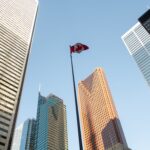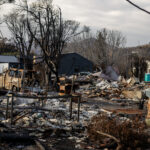Build Smart With Passive Protection Systems, Safety Institute CEO Says
To hear Julie Rochman tell it, she’d like every community in the United States to be resilient in the face of natural disasters. Rochman, president and CEO of the Institute for Business & Home Safety (IBHS) and former head of the Insurance Institute for Highway Safety, said IBHS’s aim is to make sure “citizens across the country, whether they’re on the coast or they are inland,” know what to do and have passive protection systems in place to resist natural disasters.
[IBHS] is “a 30-year-old organization that a lot of people haven’t heard of,” Rochman told attendees at the 2008 Mid-Year Property & Casualty Symposium held in Austin, Texas, in July. “We care about disasters both large and small because, in part, we know from research that for every dollar you invest in loss prevention” there is return benefit of $4.
Rochman conceded that as a country, “we are not there yet,” but maintains that if structures are built well, building codes are appropriate to the area — and they are enforced — and land use policies are good, it doesn’t have to be an expensive and time consuming proposition for individuals to protect their property from disasters.
She cited communities near San Diego, Calif., as examples of disaster resilient sites. Sometimes called shelter-in-place communities, (she prefers the term fire resistant communities) all the properties have prescriptive passive loss prevention techniques in place that are required by homeowners covenants and designed for wild fire prevention.
“Homeowners don’t have to do anything, you just have to comply. And you bought into that community knowing what the deal was,” she said.
After the wildfires in October 2007, IBHS studied those communities “at a very granular level — what’s the siting, what’s the roofing, what’s the landscape, what’s the topography, what were the meteorological conditions, the wind conditions, the humidity,” she said. “We could actually see the fires approach those communities and then be deflected away around them.”
The group also looked at communities that were not so lucky. Although the perimeter was well-protected and defensible space was provided, not all of the fire-resistant techniques were in place, she said. Embers carried on the wind breached the perimeter, landed in the middle of the community and lit houses on fire. “They landed on some debris on a roof, they got sucked into a vent and the house burned from the inside out — whatever it was — that house will burn longer and hotter than grasses or trees,” Rochman said. “And it becomes a torch that then radiates heat out to other homes in the area.”
(The results of this study were published as MEGA FIRES: The Case For Mitigation, The Witch Creek Wildfire, Oct. 21 – 31, 2007.)
Building Smart
Noting the popularity of the “green movement,” Rochman said one of the strongest arguments from an environmental perspective for building resilient communities is that it keeps buildings from becoming landfill. “If you want to be green, you want your structures to stay in place,” she said. For example, in Iowa, as a result of the floods earlier this year, “they took out a year’s worth of trash from Cedar Rapids in one week. … And a lot of that trash is hazardous. So if you really want to be green, you ought to be following sustainability, durability.”
Building techniques that make a home resilient also help with energy efficiency, she noted. Making “sure your roof is held on by more than gravity, buying dual pane windows, those are good for energy costs, too. The things that you will do to keep the bad air out … also keeps the good air in. … Your energy bills go down, catastrophe losses go down. These are good things,” Rochman said.
Building to suit a particular geographical area using vernacular or indigenous architecture is also smart. In Bermuda, for instance, the majority of houses are built with hip roofs, which are better for wind-resistance, she said. “They’re smart. Where are they going to go? The storm is coming. It’s Bermuda. They’re a speck in the middle of the ocean, they’re not driving anywhere. They’re not evacuating, they’re hunkering down. So they build smart.
“In this country we know how to build smart. We know what works,” she said, but we don’t always do it. “The problem is we took the houses from Nebraska and Ohio and New Eng-land and we went to Texas and Arizona and Florida. … We didn’t build for where we were going; we built the way we wanted to build based on where we came. And that’s wrong.”
Obstacles to Resiliency
Rochman acknowledged a number of obstacles thwarting the development of resilient communities nationwide. Among them: property rights and land use planning; building codes and their enforcement; and financing.
Citing the record losses this year from various types of peril — well before the development of Hurricanes Gustav and Ike — she pointed out that once disasters pass, there’s a tendency to go back to building the same way in the same places as before. “We have the pieces in place, they go away and then we put them back in the exact same way. Because property rights in this country are sacred,” Rochman said. She described the prevailing attitude as: “‘I can build whatever I want wherever I want however I want, and if it blows away or burns down or shakes apart, I’m going to build the exact same thing again.'”
Texas and Florida, for instance, continue to build in hurricane prone areas despite the billions of dollars in property exposure at risk. But, she asked, “the fifth or sixth time your house washes away, why should somebody pay you to rebuild it in the exact same place in the exact same way? Here’s my solution for that: When you’ve had a total loss, you go bare after that. If you’re rebuilding in a flood zone, if you’re rebuilding in the same old way, putting that house up where it shouldn’t be, it’ll go bare. It’ll never happen, but it would be interesting to call peoples’ bluffs.”
IBHS’s mission is to provide useful information to states, local governments, neighborhoods and individuals so they understand what it takes to build disaster resistant buildings and communities. The question is, Roch-man noted, what’s it going to cost and who’s going to pay for it? “Is it going to be the insurance industry? It’s the first thing people say: ‘I’ll put shutters on my house if I live in Galveston, but am I going to get enough money back on my insurance policy to pay for it?'”
She suggested a group effort. If someone in a hurricane-prone area puts shutters on their house, maybe the insurance company should give them something back. States could encourage mitigation — as South Carolina and Florida are doing — with taxpayer grants to a certain level of home value. Mortgage lenders could provide discounts on mortgage interest rates or increased equity for homeowners that build or restore their houses using disaster resistant techniques, she said.
And, Rochman added, “we’re talking to architects, engineers, designers about valuing granite countertops less and well-built houses more. You shouldn’t market a house based on the fact that it has surround sound and granite countertops. … You should be marketing the house based on the fact that the roof is held on by more than gravity, that you have double-paned windows, etc. That’s what makes a house valuable.”
More information may be found on the IBHS Web site at: www.disastersafety.org.
Topics Catastrophe Texas Florida Property
Was this article valuable?
Here are more articles you may enjoy.


 Brookfield Targets Global Dominance in P/C Insurance Coverage
Brookfield Targets Global Dominance in P/C Insurance Coverage  Death of Teenager on Carnival Cruise Ship Ruled a Homicide
Death of Teenager on Carnival Cruise Ship Ruled a Homicide  California Again Delays Wildfire Protection Rules for Homes
California Again Delays Wildfire Protection Rules for Homes  Baldwin Group to Buy CAC Group for About $1B in Cash and Stock
Baldwin Group to Buy CAC Group for About $1B in Cash and Stock 


